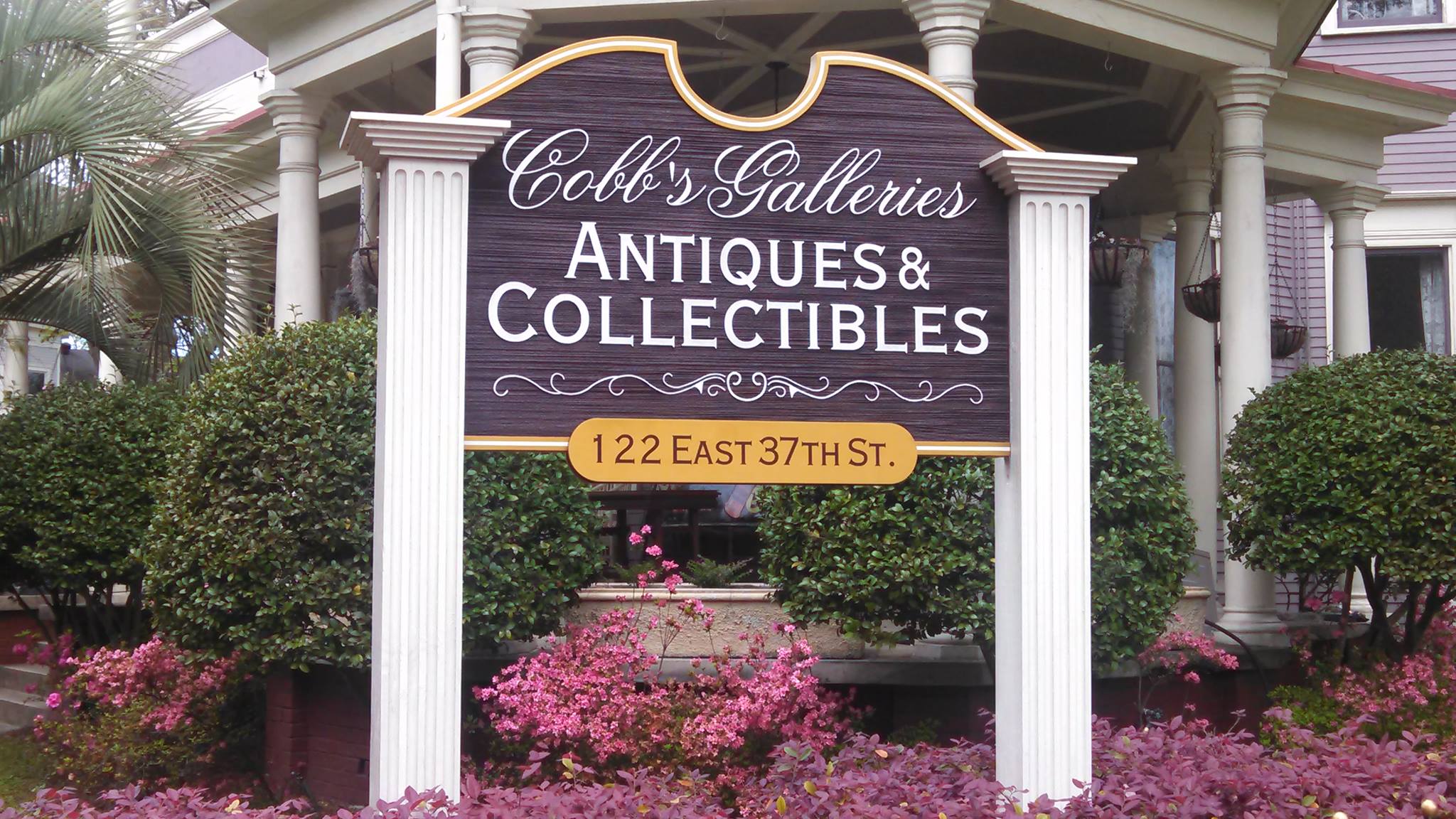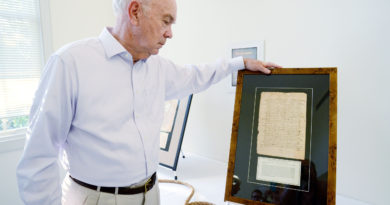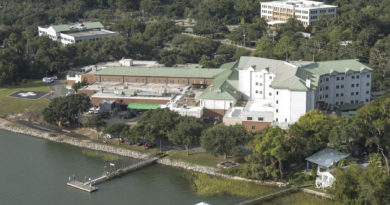Daniel Gambrell : Tells His Story with His Park Manager’s Hat On, and Off
Story By: Mary Ellen Thompson
Photos By: Paul Nurnberg
The Friday that Hurricane Matthew was heading in this direction, Daniel Gambrell, Park Manager for Hunting Island State Park, left Hunting Island under the evacuation order. He was allowed back on the island on Monday to assess the damage that had occurred to the park. “I thought I was kind of prepared from the news reports, and then seeing all the sailboats on the runway at the airport. The access to the Harbor Island Bridge had washed out so it was difficult even getting to the island, but when I got here…” He just let that sentence hang, because there probably were just not any words to describe what he felt. Daniel was accompanied by Park Director, Phil Gaines, and Coastal Regional Chief, Ray Stevens. They couldn’t get into the park with vehicles so they walked from the road through the water, under and around the fallen trees, to the campground. Trees had toppled onto the camp store; the restroom buildings, even the toilets, were filled with sand from the storm surge.
Daniel remembers, “We saw one of the largest bucks I’ve ever seen in the park, standing on a small elevated piece of ground. He looked like he was saying, ‘Hey, you guys, you have no idea what just happened here!’ It took us four hours to get to the lighthouse from the park entrance; we were wearing hip waders because the water was so deep. We tried to walk to South Beach and turn left to get our bearings because even Ray, who lived in this area for a long time and was Park Manager for sixteen years, couldn’t recognize where we were. When we got to the beach, the tide was high and there was a washout that we couldn’t get through so we walked back inland and around until we found the lighthouse. When we finally saw it – it was perfect! That was a special moment for us to see it standing so proud; it gave us hope.
“After Phil and Ray left, I was there with just one other person for the next three days trying to cut through the debris. On Tuesday, I was walking down the road to the campground; so much water was going across it that it sounded like a waterfall, I looked ahead and saw two alligators swim across right in front of me! They didn’t even give me a second glance; the storm didn’t seem to affect the animal population.
“All six of the ranger residences were in reasonable shape. My family came back on Friday; we didn’t have power or water until then although I had a generator. You realize that you can do without electricity but not having water is another issue; we were able to get out and get water and bring it back in gallon jugs. Everything seemed so quiet – no noise from traffic on the road and even the wildlife seemed to be especially quiet at first. I would sleep for awhile and then get up and go back to work.
“My wife, Jana, and daughter, June, had left on Tuesday so by the following Friday it was exciting to have them back, and they were happy to be back. At four and a half, June was too young to understand what had happened but it was hard for my wife to see the damage and devastation because she loves the park so much. Born right before we came here, June grew up in this park. She loves the Nature Center; it is by far her favorite place on the island, not just because of the animals and the programs, but she loves the staff.”
The Visitor Center and Nature Center buildings didn’t suffer damage but the walkway to the Visitor Center had to be rebuilt and the pier at the Nature Center was pretty much destroyed. Now it only extends to the edge of the marsh and can’t even be used for fishing. The Nature Center became the hub of the park as they used it for offices, and it was the first area to re-open to the public.
The campground is still closed and it is hoped can re-open mid to late July. The camp store was saved; it had been flooded with six inches of standing water, but was able to be renovated. The two restrooms in the front were demolished, the four in the back were renovated, and the dune system was washed out. Of all the camping spaces, 88 were lost, with only 100 remaining. Prior to the hurricane, the campground generated about $1.5 million in revenue for the park, and the gate about $900,000.00, so close to half of the campgrounds revenue will be lost. For reservations that had been made, efforts are being taken to transfer them to another park if so desired, refunded, or changed to a different date.
The immediate focus is now on the North and South Beaches. The restroom building on the beach at South Beach had to be demolished, but the newer restroom on the back side of the parking lot, at the north end of South Beach is still there. The changing rooms and shower towers are still in the parking lot, but the access to South Beach is temporarily different as you have to turn right before you get to the beach and go along the back side to the far end of the parking lot and then loop back around. Cabin Road is gone, and the dunes are gone here also.
There is about a 150 foot breach where the ocean now comes into the lagoon about halfway between South Beach and the southern end of the island, at low to mid-tide you can still walk across it but not if the tide is any higher. It has, in effect, created a separate island at the southern end. There is some interesting history here as the origin of the lagoon is generally misunderstood. In his book, The Road To Hunting Island South Carolina, Nathan Cole relates the history of the island being turned into a county park with the assistance of the Civilian Conservation Corps (CCC) back in the 1930’s. He says, “The CCC also changed the landscape of the island. A saltwater lagoon was dredged at the southern end of the island. The lagoon was opened to the sea so that it could be affected by the tide movement and allowed a large variety of ocean fish to find shelter in the gentled water.” A different source of information says that the lagoon was created by sand dredging in 1968 as the first in a series of attempts at beach renewal programs. In 1997, Mr. Cole made this prediction: “If a category three or four hurricane hits the island, the conditions are right for a new inlet to be cut from South Beach to the lagoon, thus creating a new, smaller island.”
At North Beach the dunes are also gone but the picnic shelter, the lighthouse gift shop and the lighthouse compound are all in good order. Daniel says the largest oak tree in the park fell on the one remaining cabin for rent behind the lighthouse. It has been totally renovated and is as bright and shiny now as a brand new copper penny, and has reservations for the next thirteen months. North Beach is a guarded beach with three lifeguards on duty at a time and sometimes people on foot; The Beaufort County Sheriffs Department also helps to patrol on busy weekends. There are no lifeguards on South Beach where you can surf or fish.
When asked what we can expect in terms of going forward, Daniel explains, “We are concentrating on the day use beaches first, then the campground. The use of a shuttle is still being explored. We have parking issues – we can get to maximum capacity and have to close the park when we still have room for people but not any more cars. The trails are all clear; flooded from the rains right now but all good. There isn’t any timeframe yet for repairing the pier or the marsh boardwalk. Programs at the Nature Center are being held including the Junior Ranger program, and the Ultimate Outsider Program where participants get stamps from the 47 state parks and get to experience all the differences of the parks. The loss of the dunes is of great concern and we’re hoping for a beach renewal this coming winter.”
On another note, Daniel explains that Little Blue (the last cabin on stilts that was standing out in the ocean) had been scheduled to be taken down before the hurricane because it was a safety and environmental hazard; the storm made its condition worse. The State Park Service paid for its excavation which was done at low tide while the park was closed for repairs.
“Recovery has been amazing,” Daniel explains. “The park staff, Friends of Hunting Island, local legislators, state park staff working in Columbia; it’s been a group effort. We’re working with FEMA and our insurance companies trying to get the reimbursements.
“Through the process of getting the park ready, we realized we were missing
something: visitors. Hearing voices and children playing, that was what was missing. People who haven’t been here before think it is beautiful; people who know the park see all the changes.”
Finally, after months of intense work, Daniel and his family can enjoy the park that is their backyard, again. Daniel smiles as he says, “I’m a full time daddy. We love fishing, being outdoors, cooking on the grill, and spending time with friends and family.”
You can still see the effects of the storm – fallen trees, leaning trees, trees propped up against others, cut tree stumps, yellow caution tape in some areas, backhoes and other equipment moving through the park, dark standing water along the roadside and on parts of the trails. But no one seems to mind as they head toward the beach with their towels, coolers and chairs in hand. Hunting Island State Park has opened its gates and we again have access to one of the most beautiful places we know, with many thanks to the hard work of all the volunteers, park staff and Daniel Gambrell.




